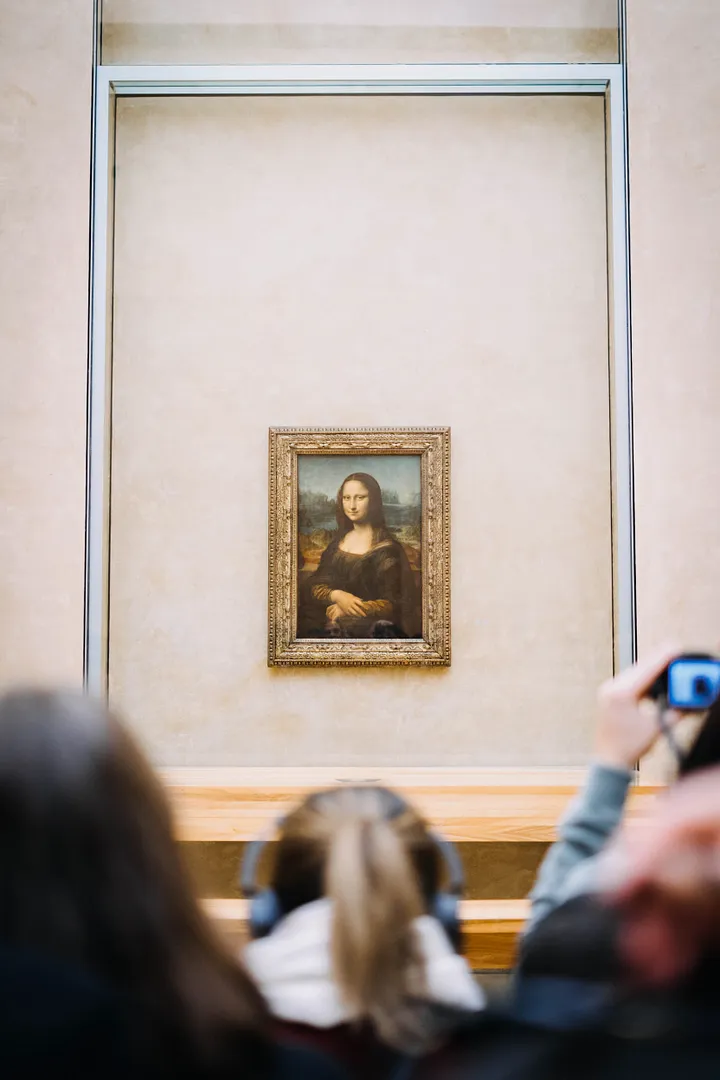Art Vandalism Takes the Cake this Week
In Art News…
Instead of vandals at the gates, we have vandals at the frame.
What the hell is with the recent rash of vandalism of fine art? Whether protest, performance art, or mental illness, fine art is a target for attack.
MONA LISA CAKE
This week, a perpetrator, yet named, faked being an old woman in a wheelchair so he could get close enough to the Mona Lisa. Once in position, he sprung up, ducked under the rope barrier, and began pounding on the artwork’s protective glass.
Failing to break through, he smeared cake and icing over the glass.
All to protest environmental harms. The vandal, as he was escorted by police to a psychiatric unit, screamed (in French): “Think of the Earth!”
How… discordant.
This was not the first time a vandal attempted to harm the priceless masterpiece. Poor Mona Lisa has suffered stoning, acid baths and coffee cups (discussed below), and spray paint.
And she’s not the only victim.
VANDALISM
Henri Gregoire, describing destruction of artwork during the French Revolution, coined the term vandalisme. The term applies to attempting to ruin or damage another’s property.
The most famous art vandal is Hans-Joachim Bohlmann who attacked and damaged over 50 masterpieces in his infamous tenure between 1977 and 2006.
And this week’s madness is not the only incidence of vandalism to priceless artwork. Here are some of (far from all) the more infamous examples:

BORDOM BREEDS CONTEMPT
Last year at the State Tretyakov Gallery in Moscow, a bored security guard, for his first day on the job, decided to draw eyes on Anna Leporskaya’s painting, Three Figures.
The guard was not only fired (go figure) but also sentenced to three months in prison.
IRONIC INCINDIARY
Auguste Rodin’s original cast of The Thinker was proudly on display in front of the Cleveland Museum of Art since 1917. The legs were blown off in 1970 when the Weather Underground decided a pipe bomb would improve the work. The fact that this terrorist group blew itself up along with its bomb-making facility demonstrates they never grasped the meaning behind the statue.
The Taliban apparently also did not read the memo: Over the course of several days in March 2001, they and their ilk blew up two 6th Century Buddha monuments. Talk about intolerance.
PUNCHED, KICKED, and NEEDING A DIAPER
In 2012, Andrew Shannon punched Claude Monet’s Argenteuil Basin with a Single Sailboat. The year before, Susan Burns, in a fit of homophobia, punched Gauguin’s Two Tahitian Women.
In that same year, Carmen Tisch attacked Clyfford Still’s painting by scratching it, punching it, and wiping her ass on it.
I say: “Oh, shit.”
IMPACTED
In 1993 and again in 2006, Pierre Pinoncelli used a hammer to attack Marcel Duchamp’s Fountain. Twice. He claimed it as performance art.
In 1991, Piero Cannata hammered Michaelangelo’s David. He only got the left foot. Famous penis in tact.
The hammer seems a particularly popular weapon. Used on Michelangelo’s Pieta, Laslo Toth took 12 blows. Later he was heard proclaiming himself both Jesus Christ and Michelangelo.
SHOT
Leonardo da Vinci’s drawing, Virgin and Child with Saint Anne and John the Baptist, received a gunshot to its protective glass. Although the bullets did no direct harm, the shattering glass fragments damaged the piece. So much for protective glass.
STABBED
Mary Richardson, a suffragette, attacked Diego Velazquez’ Rokeby Venus with a meat cleaver. She was angered at how male patrons gaped at the nude, reclining woman.
Rembrandt’s Night Watch was stabbed in 1911 by a navy cook, in 1975 by William deRijk. The painting survived the first attack, but still has scars from the second.
ACID WASH
Rembrandt’s Night Watch was also sprayed with acid in 1990. The anonymous PG, a psychiatric patient, was also the vandal of Picasso’s Nude in Front of a Garden. Perhaps additional security is needed at the psych unit?
By the way, Night Watch was also sprayed with acid in 1911 and 1975. Not popular with the crowd, I guess.
An unnamed vandal tried to acid wash Rembrandt’s Danae in 1985. When that didn’t do the trick, he attacked the piece with a knife. The entire central part of the work was destroyed, requiring over 12 years to restore it. Overkill? I think so.
And poor Mona Lisa was damaged by an acid vandal — in 1956 right before the stoning mentioned above. She just doesn’t get a break, does she?
AMENDED…?
In protest to President Richard Nixon’s pardon of William Calley (who committed crimes during the My Lai massacre), Tony Shafrazi wrote “KILL LIES ALL” in red spray paint on Picasso’s Guernica.
Roy Lichtenstein’s Curtains was altered by Whitney museum guard Reginald Walker who decided to add: “Reggie + Crystal I Love You Tushee Love Buns.” Romantic.
Mark Bridger added black ink to Damien Hirst’s dead sheep floating in a tank of formaldehyde entitled Away from the Flock. The whole thing is offensive, if you ask me.
Martin Creed’s The Lights Going On and Off was egged in 2001. I might agree with this vandal: “nothing against Creed, although I do not think his work can be considered as art. At worst, The lights going on and off is an electrical work. At best, it is philosophy. What I object to fiercely is that we’ve got this cartel who control the top echelons of the art world in this country and leave no access for painters and sculptors with real creative talent.”
I may also agree in theory with Alexander Brener who, in 1997, painted a green dollar sign over Kazimir Malevich’s White Cross. I think it added some visual interest.
In 2012, Vladimir Umanets entered the Tate Modern Museum in London and wrote “a potential piece of yellowism” in black ink on Mark Rothko’s painting Black on Maroon. He claims his vandalism was an attempt at a derivative work.
And, again, we return to the poor Mona Lisa, which suffered a mug to the face when a Russian woman, denied French citizenship, attacked the art with her coffee mug. Then, while on tour at Tokyo’s National Museum, a disabled woman protesting the museum’s policies sprayed red paint onto the art. No damage to Mona either time — saved by the bulletproof glass.
MAKING A POINT?
Like others on this list, Jubal Brown might have a point. He projectile vomited blue gelatin and blue icing onto Piet Mondrian’s Composition in White, Black and Red. Why? Because he deemed the piece “oppressively trite and painfully banal.” Brown also used this weapon when he attacked Raoul Dufy’s Harbor at Le Havre. How does he puke on demand?
SHRED SHOW
The most famous vandalism is, humorously (if one can find humor in these acts), by the artist himself.
In 2018, my favorite pop-street artist, Banksy, committed a glorious act of vandalism in what could be considered performance art. His famous Girl with Balloon was at auction. As the hammer fell for 1.4 million dollars, Banksy activated a shredder hidden in the frame. He said he never wanted it auctioned. And he meant it.
The painting has been renamed to Love is in the Bin.
I know you are surprised, but Banksy was not the first.
Unsatisfied with his own work, Monet, using a knife and paint, destroyed all his paintings on exhibition. Equally dissatisfied, Wladyslaw Podkowinski knifed his masterpiece, The Frenzy of Exultations. He set the self-destruction act in 1894.
Now, I ask: Is the artist as vandal to his or her own work any different than the outsider vandal?
Considering copyright law and tradition, which secures destruction rights to the creator, I say yes.



